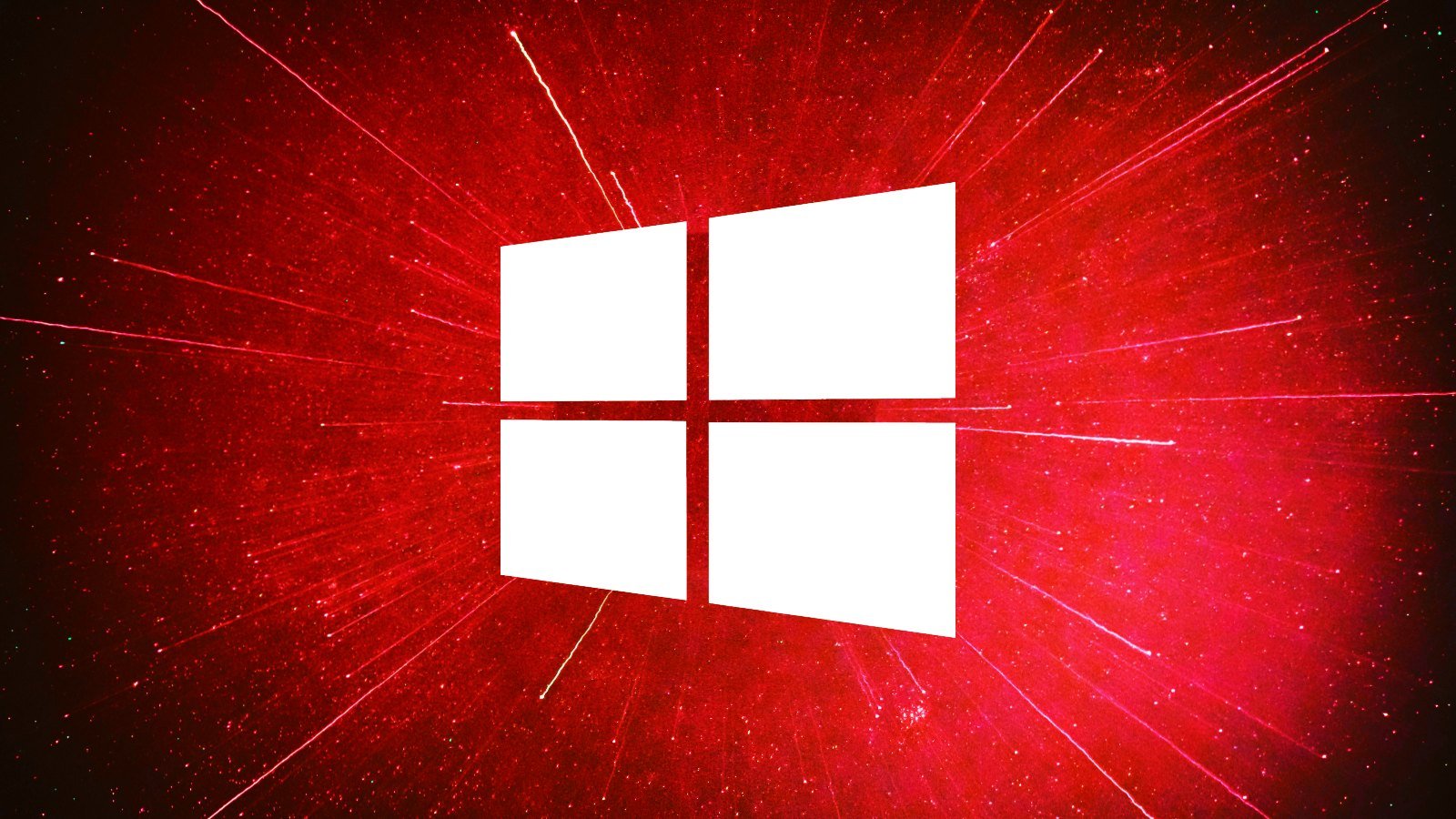- cross-posted to:
- privacy@lemmy.ml
- cross-posted to:
- privacy@lemmy.ml
Shocking. Never expected this behavior from such a helpful and heart warming company like Micro~.sft /s
deleted by creator
Man I hate Microsoft pre installing Edge on these laptops to push their browser. Anyways here is your laptop bro, also I pre installed Linux so I can push it to you.
deleted by creator
Careful with that. Microsoft loves to periodically push updates that overwrite the boot sector to disable that dual boot configuration.
deleted by creator
I’ve said it before and I’ll say it again - Windows isn’t ready for the desktop. Just use Linux.
I mean, Windows is just such a weird proprietary distro.
It doesn’t use the latest Linux kernel, or even a mainstream POSIX-compliant alternative like BSD. Instead, you have a strange CP/M-like monolithic kernel — I think they used to call it DOS — that’s been extended to behave more like VAX and MP/M.
It also doesn’t use either X11 or Wayland as a display manager. Instead, you have an incredibly unintuitive overblown WINE-like subsystem handling the display.
Because it doesn’t use Linux, Wayland, or X11, you are limited in the desktop environment that you can use. There’s really limited support for KDE, despite the best efforts of volunteers.
Instead, there’s a buggy and error-prone proprietary window manager that ships with it by default. A bit like how Canonical tried to ship Unity as it’s default desktop environment with Ubuntu.
And confusingly, they’ve named that window manager Windows as well!
That window manager lacks many of the features an everyday Gnome or KDE user would expect out of the box.
It also doesn’t ship with a standard package manager, and most of the packages ship as x86 binaries, so installing software works differently to how an everyday Linux user would expect.
There’s also only one company maintaining all of these projects. It insists on closed source, and it has a long history of abandoning its projects.
And sure, if you’re a nerd who’s into alternative operating systems, toying with Windows can be fun.
But if your grandpa is used to Linux, frankly he’ll be utterly bamboozled by the Windows experience.
I’m sorry to be glib, because Windows does have some nice ideas.
But.
Windows on the desktop just isn’t ready for your average, everyday Linux user.
I agree with every single bit of this but felt like I was being attacked the whole time I read it. Maybe it’s PTSD from asking questions in Linux forums as a kid and getting ripped into with long replies. Does anybody else feel that way?
@ajsadauskas @Naich @ardi60 And if you thought that was confusing, the same company also makes a “Windows Subsystem for Linux” but appears to have got the name backwards — it’s not FOR Linux, at all!
Is this why Windows has started opening all my chromium apps in edge? They fuck up constantly and it’s really making me want to ditch windows.
If I understood Jack audio as well as I understand Voicemeeter, and if I could get my damn push to talk button working properly in Solaar I’d be done by now.
If anyone has a solution to the edge thing please help.
Does that mean Teams will finally stop opening links in Edge when that’s not my default browser?
To anyone saying “just use GPOs”, here’s a quote from the SetUserFTA page:
Microsoft offers a solution with GPO, but it is Computer-based and not User-based – and rather complicated. this means, you can not associate your Users on the same Server/Client with different file types. for example:
you have a PDF viewer and a PDF editing software on your XenApp server. Now you want that a certain group opens their PDF’s in the editor and the others only in the viewer (for licensing reasons for example). this is NOT possible anymore and Microsoft states “it is by design” and “this is a security measure”.
Said solution:
- Set up a reference computer
- Install applications
- Go to Control Panel\All Control Panel Items\Default Programs and configure default apps associations.
- Export/import the custom default app association with dism.exe
[…]
As some recommended applications can manage more extensions with each new Windows 10 version available, it’s a good practice to refresh your XML. For example, in Windows 10 1703, Microsoft Edge registers the epub extension. If you’re using an XML file from Windows 10 1607, epub is missing. As a result, you will get an app reset notification for epub.
[…]
Configure a policy for your domain-joined computer: file association will be configured at each logon. User will be able to change file association, but at the next logon file association will be configured using XML file. This policy works only for domain-joined computer.
This is just about the most convoluted, annoying way they could come up with for doing this, doesn’t help people whose machines aren’t part of AD and isn’t scriptable. If they were mainly concerned about security they’d have an option for not allowing the user to change these preferences even temporarily on domain-joined machines.
a) this is a good thing because users installing extensions and programs that stealthily change defaults is pretty common b) businesses are going to use group policies so it won’t affect them.
I understand that software directly and silently changing the default software can be a security issue. But it’s only because it happens silently. Does Windows allow for showing a system prompt that confirms the change to the user? If not, then that’s just plain ol’ anti-competitive. Especially with how pushy Edge and Bing can be.
I don’t think the goal is to lock you into their browser, since you still can change it through the GUI. It seems to be part of the recent push to block software which changes hidden settings. The end goal being to lock down the OS and prevent users from disabling features MS wants to push onto them.
Luckily I’ve changed my default OS to Linux
This is the way
Lol … you can bypass the Windows restriction by deleting the System32 folder
Microsoft hates this one simple trick
Instructions unclea—
Classic
So the fix is to manually set your default browser. No more can programs do it for you.
I mean, it’s not hard, and it stops most malware from doing it.
It’s still going to artificially inflate Edge’s numbers from tech illiterate users that don’t know how to change it. There’s a significant number of users out there that will put up with Microsoft shitting down their throat before bothering to expend the few minutes it would take to learn how to change the settings themselves. The few that do try to figure it out will find Edge directing them to Bing which will make every effort to convince them not to do it. Meanwhile, Edge will steal all their bookmarks and tabs from Chrome, in order to further encourage users to just give up and use Edge.
It’s all calculated “dark patterns” shit, and it works. Microsoft counts on these people being so easy to corral.
And you can bet your ass after they implement this, they will push an update that “accidentally” resets the default back to Edge for everyone. Just to “clear the board”.
Other browsers can still point to the settings panel where you see your default program association, you just need to change it yourself.
This is a good change security-wise.
Are tech illiterate people intentionally using 3rd party software to change their default browser? Genuinely asking because I have always manually set my default on a new device.
The web browser would offer to do it for you. Know it can’t. The Unser knows has to navigate through the settings.
I won’t be surprised if Microsoft still makes it possible for edge to change the default without the user going into the settings.
Not necessary, the browser can offer you to change it and link to
ms-settings:defaultappsto get the user at the exact menu where they can make the change.Where they now have to click on the right combination of 8+ browser choice menus (and Microsoft keeps adding more by splitting out various custom protocol handlers) and select the correct browser in all of them.
And then they’ll still wonder where their bookmarks and saved passwords and shit went and get mad that it “looks different” when Edge inevitably opens up again randomly when they click something else, and then they click that popup to make Edge the default to make that popup go away (because Edge is allowed to make itself default with one click, but nothing else is), and then they call support and yell
Source: I’ve taken those calls in support
The install wizard of Firefox/Chrome/etc. presumably counts towards “3rd-party software” here…
No they’re not. And the tech literate people that will see that they can disable this protection and continue as normal.
Microsoft doesn’t always do good things, but I think this is fine. If you open firefox it’ll ask you if you want to set your default browser, and it won’t regedit for you. It will open up the proper windows menu that lets you set firefox as the default.
Not letting malware change your settings by default is a GOOD thing. It is also a good thing that advanced users can disable the feature.
The only bad thing about the story is the lack of transparency. Having to find out about it by breaking tools is bad. It would be better if they had a changelog for these updates that say what they do so admins can see if their tools will be affected.
Looks like Microsoft is going to war
If you read the article you’d see that per Microsoft this is due to them not wanting the liability of an administrator changing settings without the users knowledge, then the user either not receiving a prompt for a default browser or their selection being ignored, both of which would violate the DMA.
I’m not really sure how the DMA applies to corporate-owned machines, at what point is the administrator the user?
Now I guess you’ve got to determine whether or not you take MS at their word or not. The example of blocked software was a script that edited a reg entry, for administrators to use. How does something’s like the prompt built-in to a browser like FF or Chromium asking if you want to set it to be the default browser operate? If it’s through setting this registry key lolol well played MS. Is ignoring user input from an uncontrolled third-party application and requiring the change be made in the Windows settings themselves a dark pattern, or at that point is it just malicious compliance? Although for all I know that’s not how the in-application prompts update the OS default file handlers.
Nowhere does MS claim that.
“Kolbicz believes this change may be to comply with Europe’s Digital Markets Act (DMA)” (emphasis mine).
“BleepingComputer contacted Microsoft about the lockdown of these Registry keys in March, but they said they had nothing to share at this time.”

We know. You keep telling us.
Don’t worry, someone will port it to Linux some day.
Here is an alternative Piped link(s):
they ported ms edge to linux already
Piped is a privacy-respecting open-source alternative frontend to YouTube.
I’m open-source; check me out at GitHub.
Presumably one can still set default in settings. I’m not giving up Firefox yet.
Yes, the article clearly indicates MS stated purpose here was to ensure that an end user is presented with the default selection options and their choice is respected, regardless of administrator actions outside the user interacting with the settings panel. MS is not trying to force everyone to use Edge.
But why? Is administrators forcing their company’s laptop to use certain browser actually a significant problem before?
They aren’t talking about system administrators. They are talking about 3rd party software presenting a privilege escalation prompt (administrator access) and changing your default browser without you knowing about it
Still doable for corporate-managed devices through GPOs, MS Intune, MECM, etc
It’s not that’s it’s a problem per se, it’s that MS thinks it might leave them liable to punitive action under the DMA. While i’m not convinced whether MS is being honest or if it’s a bit of malicious compliance/dark pattern stuff, I fully believe that there’s some spite layered in there from the 90s regardless.
Its more a issue in China where every browser (read malware) would make itself the default and it’s a pain to change it back.
They say that, but I’ll believe it when I see the implementation.
Nowhere in the article does MS say that. It’s presented as an argument, while MS said “no comment”.
Nowhere does MS claim that.
“Kolbicz believes this change may be to comply with Europe’s Digital Markets Act (DMA)” (emphasis mine).
“BleepingComputer contacted Microsoft about the lockdown of these Registry keys in March, but they said they had nothing to share at this time.”
Google gets to do this on Android. Apple gets to do this on iOS.
The unfortunate reality is that MS is catching up to the bad apples in bad behaviour.
Microsoft is the OG. The other two are just imitators. The only reason Microsoft happens to step carefully. Was a little thing that happened in the late 1990s. That all penalties were largely waived for. But still it frightened them enough to behave better for a short while.
Google has long since surpassed anything MS dreamed of doing.
Edit: to be clear, this article is that they’re blocking programs other than the control panel from changing the default browser.
Meanwhile, in Android, I’ve set Newpipe as the default app for YouTube videos. I have every single url for YouTube set to open in Newpipe. Still opens all YouTube video links in the YouTube app.
So Google is selling license for code and technologies. They’ve shown no ownership of in a competitor’s product? Google is actively funding litigious troll shell corporations who shown no actual harm to harass and drain competitors resources? Google is creating and using secret apis for themselves. Breaking the ones for third parties in order to hold them back?
I’m not saying Google’s good Or anything. Not defending them in any way. But they’ve got a long way to go before they reach Microsoft level. Microsoft is literally the reason why before going public. Google had the motto of don’t be evil.
But this isn’t a bad thing
I’m not sure that a protection against changing the default browser with third party programs (maybe without the user knowing) via the registry is the evil thing being depicted here.
The way I read this article is that this is a move for compliance with the new digital markets act and I’m not seeing the maliciousness.
Willing to be wrong, I haven’t used Windows regularly for like 20 years.
That’s one take, except even the article notes that’s a weak argument.
You kidding? That means First party is now a protected method which will absolutely result in the expected outcome like they have done with every “feature” update blocking work arounds.
Incomprehensibly stupid, because all they have to do is ask the user to confirm. Forcing through their own default instead of asking is malicious.





























